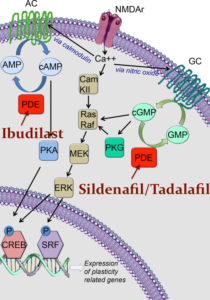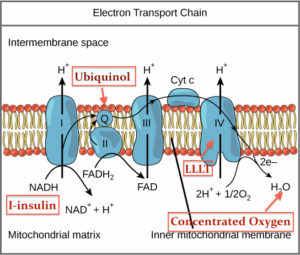Quick Summary
Use The 20/10 Method to rapidly record long term memories: study (20 min), break (10 min), study (20 min), break (10 min), study (20 min). R
Read on to learn how to practically apply this powerful tool, see it in action first-hand, and discover a handful of substances that can enhance its effects!
The 20/10 Method
Over the past year and half I’ve been using The 20/10 Method to dramatically increase the rate at which I’m able to acquire new memories.
The beauty of this method is its utter simplicity…as well as the fact that it’s free!
Using The 20/10 Method, 13 to 15 year old biology students were able to score just as well on standardized tests as their peers…with one “minor” difference.
The regular students took a class for four months while the 20/10 students studied for only 1 hour!
Let’s hear about it from one of the students, “I don’t try to learn; I don’t write anything down, and I don’t review. It just seems as if I am seeing a movie in my mind that I have already seen before, and my understanding of the information presented becomes more precise—clearer—when I see it again.”
So, why does this work?
Neuroplasticity.
Neuroplasticity
The reason The 20/10 Method works is that it takes advantage of the science of neuroplasticity.
What neuroplasticity means is that neuronal synapses (the “neuro” part) can change size and shape (the “plasticity” part) depending upon their activity or lack thereof.
I won’t overwhelm you with the scientific details here (though I almost certainly will in a later post…it’s just too damn fascinating!) but long term memory (LTM) formation or long term potentiation (LTP) occurs in a number of steps and follows timing rules.
Rules is Rules
As many of you know, an axon fires neurotransmitters (the pitcher) and a dendrite receives neurotransmitters (the catcher).
When the dendrite receives a sufficient number of neurotransmitters over a sufficient period of time with a sufficient number of breaks in between, it activates a genetic program that causes the dendrite to literally grow in size.
Pretty cool.
Here’s what a growing dendrite looks like in LTP.

Here’s another example.

As you can see, the dendrite not only grows in size over time, but more receptors are added to the surface of the cell.
This makes the neuron more excitable.
The enlarged dendrite allows you to remember your first birthday, recall your lover’s face, or cringe over that shameful time your mom walked in on you back in middle school when you were online surreptitiously watching…………..Tay Zonday videos.
What’d you think I was gonna say!?!
Dirty minds. =)
So, how does The 20/10 Method relate to growing dendrites?
Like this and like that and like this and uh….
The 20/10 Method
After experimenting for over a decade, neuroscientists and educators have found that long term memory formation is greatly enhanced by placing strategically timed breaks in between intensive study sessions.
Here’s what it looks like.
1. Study condensed information intensively for no more than 20 minutes.
2. Break/distractor/physical activity for 10 minutes.
3. Study the same thing for 20 minutes with an emphasis on recall.
4. Break/distractor/physical activity for 10 minutes.
5. Study the same thing for 20 minutes with an emphasis on application. R
I’m familiar with condensing information and studying intensively, but what is this “distractor” business?
She Thinks My Distractor’s Sexy
The idea behind the break/distractor is that it should be VERY different from the study time.
The goal is to activate completely different brain regions from the ones used during the study period so that you don’t overwrite your newly formed memories.
You definitely want to avoid email, web surfing, reading, writing, etc.
It’s also a good idea to keep conversations (if you’re with people) to a minimum.
For 13 to 15 year old students they used the following distractors: juggling, origami, paper-cutting activities, musical chairs, play-dough modeling, light aerobics, basketball drills, etc.
For those of us who aren’t pimply-faced-rebels-against-the-world-who-know-everything I would suggest meditation, deep breathing, light jogging, shooting hoops, concentrated oxygen, vibration plate, eating a healthy snack, etc.
Try some different things and see what works best for you.
I’m rather partial to meditation, deep breathing, short walks, and concentrated oxygen myself (concentrated oxygen has been shown to measurably enhance memory formation in humans. See my post Concentrated Oxygen.).
Does the break HAVE to be 10 minutes?
Not necessarily.
Five minutes has also shown some efficacy in the literature and I’ve had pretty good results with a 10min/5min/10min/5min/10min study/break structure.
So, is there any way we can enhance this method further?
Indeed.
Don’t Call It A Comeback
As I mentioned before, The 20/10 Method relies on gene activation and the creation of new proteins.
Let’s hear it from the study, “LTM processes have been demonstrated in great detail in Drosophila where spaced training produces stabilized LTM (long term memory) and de novo protein synthesis showing cAMP response element-binding protein (CREB) dependent gene transcription.” R
The key terms being cAMP, CREB, and gene transcription.
Here’s what the cAMP-CREB-memory/transcription relationship looks like.

Just to ridiculously simplify…the main idea here is that scientific models of memory have shown that increasing a substance called cAMP can increase the activity of another substance called CREB which causes gene transcription and thus enhances long term memory.
Remember the picture I showed you earlier of the enlarged dendrite?
When cAMP is increased, CREB is increased.
When CREB is increased, gene transcripition is increased.
When gene transcription is increased, the dendrite grows and memory is increased.
Is there a way to increase cAMP?
Absolutely.
Ibudilast
Ibudilast has been shown to inhibit a protein (PDE4) that breaks down cAMP. R
Here’s a visual that shows how PDE relates to cAMP.

So, when you take ibudilast you inhibit PDE (PDE4 to be more precise).
Inhibiting PDE4 prevents the breakdown of cAMP and thereby increases its levels.
The increase in cAMP ultimately leads to bigger dendrites being built which leads to better memory.
But how does building occur?
If You Build It, They Will Come
ATP is also essential for the creation of long term memories.
In order to build bigger dendrites in the brain our neurons MUST have a sufficient supply of energy in the form of ATP.
Think about it this way.
ATP is the energy currency of the cell.
If cells want to build something they HAVE to have energy to move the various proteins, lipids, nucleotides, etc. around.
Ordered movement is pretty much essential to “building”.
Genes provide the information while mitochondria provide the energy/ATP.
Restated: 1) genes tell your body what to build and 2) ATP is the energy used to build it.
Imagine a construction site where every worker was so tired they were unable to lift anything.
You’d never get anything built!
That’s how your body would be without ATP.
But that is not going to be our fate!
ATP To The Rescue
LLLT has been shown to increase cAMP AND brain ATP levels through photoexcitation of electrons within mitochondria. R
Intranasal insulin has been repeatedly shown to enhance human memory and has also been shown, through P magnetic resonance spectroscopy, to raise ATP levels in human brains. R
Concentrated oxygen has been shown to improve mood, memory, reaction time, visuospatial memory, verbal performance, dual n-back scores, working memory, and brain energy levels. R
I’ve written about how these amazing substances work and where to buy them at these fine web loacales:
1. Ibudilast
2. LLLT
3. Intranasal Insulin
4. Concentrated Oxygen
And yes, they stack together brilliantly.
Take a look at how they work together synergistically in the the electron transport chain inside mitochondria.

And they stack even more brilliantly when combined with The 20/10 Method.
We End At The Beginning
We have now learned how to take advantage of timing rules, breaks, and pharmaceuticals/devices to enhance The 20/10 Method and give us a memory we never knew was possible.
Maybe it’s time to take a little 10 minute break, come back, and read this post again!
At least I THINK that might work.
I can’t remember.
Until next time!
LF Out.
Where To Buy
The 20/10 Method: nowhere…it’s free!
Ibudilast: Pinatos
Ibudilast: Ketas
Intranasal Insulin — purchase Novolin-R legally, over the counter, without a prescription at Walmart for $25.
Nasal Spray Bottle
Nasal Spray Bottle (Swiveling Head)
LLLT: 96 LED Array
LLLT: 48 LED Array + Adapter
LLLT: Tendlite
Try The 20/10 Method for acquisition and spaced repetition flashcards by Anki for even longer term retention: Anki
Appendix 1: Videos Showing The 20/10 Method in Action
Appendix 2: Common Questions and Answers for Teachers Using The 20/10 Method
Here is an excellent set of frequently asked questions for teachers using The 20/10 Method found in this slideshow. R
What age groups is Spaced Learning appropriate for?
Spaced Learning should work with students of any age. However, be aware that the presentations included on this disk were designed for 13–18- year-old students.
What ability levels is Spaced Learning appropriate for?
Spaced Learning is appropriate for all abilities, as long as students are able to read.
How do you decide what to put onto the PowerPoint slides?
We put on what we really want our students to know. That’s the only guideline we use when we’re making them.
How long should the inputs last?
The only limit on the inputs is your students’ concentration, and you will know better than anyone how long that lasts. In our experience, 10 minutes is a good length for the first input (the absolute maximum time we would spend is fifteen minutes). The second and third inputs are more flexible – it depends on the nature of the tasks you’ve set your class.
How much information should I cover in a single session?
It’s possible to go through a year’s worth of material in a session, but it’s exhausting. We’d recommend breaking a year’s worth down into at least three different sessions. The really important thing is to stick to the cold, hard facts. As teachers, our instinct is to add opinions and observations but, for Spaced Learning, it’s important to strip our presentation down to the bare essentials.
How do you decide what to take out of the presentation for the second input?
You take out the things you want them to remember – so go through and remove the key words/ideas. You need to decide how many of the words/ideas to remove based on the age and ability of your audience.
What’s the difference between the second and third input?
The second input is focused on recall, and the third should check understanding. This means that, for the second input, you want to get an idea of how much the students have picked up so far. In science we take words out of the PowerPoint presentation and have the students fill them in, because science is full of key words. But different subjects will have different needs. For example, in maths, students might have problems to solve on paper, to see if they’ve understood the methods for solving a particular problem. For the third input, the students should have some kind of task to apply what they’ve learned. So in maths, for example, students could be given a ‘real-world’ problem to solve using the concepts they’ve just been taught.
What are the best activities to do during the breaks?
There are three important things to think about here: the activities should be as different from the presentation as possible, they should be varied, and they should last about 10 minutes. So we recommend physical activity without much talking, and with no writing. This is so that a different part of the brain is used during the breaks. We’ve found that it’s good to go for stuff that younger kids would enjoy – the most popular activity by far is moulding play-dough. Juggling and sports skills work very well, particularly if you can get outdoors easily from your classroom – but it’s fine for children to stay in the classroom too. Finally, ask your students what they want to do! They know what they enjoy.
What is the optimum amount of information to put on a slide?
When you’re making a slide, think about what’s going to look interesting to your students – if a slide is really text-heavy, it’s going to be boring to read. However, since the text will be stripped down to key points, you may be able to fit more than you expect onto a single slide without it getting too crammed with words.
I’m not very comfortable with PowerPoint. How can I make slides that look good enough?
The most important thing is that the slides be easy to read. They don’t need to be fancy. Having said that, we weren’t very confident about using PowerPoint when we created our first Spaced Learning presentations. We modified slides that a teacher at another school had developed for a conventional science presentation. You can do the same with the presentations that are included on this disk (see page 18). There is also specific guidance on putting together a Spaced Learning presentation on page 5.
Would it be helpful or counterproductive to play music during a Spaced Learning session?
We don’t have any evidence either way, but if it makes the lesson more enjoyable, go for it!
How quickly should I go through the slides?
We go a bit more quickly than we would with a normal presentation, because there’s so much information to get through, and because it brings some energy into the room. But you don’t need to go quickly in order for Spaced Learning to work. Judge your pace based on your audience, and the amount of information you need to get through, and experiment with different speeds.
Is it always best to talk during the presentation rather than just showing the slides in silence?
We always talk, because it seems like a lot to ask a class of kids to sit in silence and read a PowerPoint presentation without anything else happening. Also, because the slides are so stripped-down, sometimes the information won’t make any sense without a bit of further explanation.
How often should a student be taught with Spaced Learning?
Spaced Learning has a very specific purpose: to help students acquire a very large quantity of information within a small span of time. Most of the time you won’t want to do this, so Spaced Learning will only be appropriate on a few occasions during a term.
The Study
Front Hum Neurosci. 2013 Sep 25;7:589. doi: 10.3389/fnhum.2013.00589. eCollection 2013.
Making long-term memories in minutes: a spaced learning pattern from memory research in education.
Kelley P1, Whatson T.
Author information
Abstract
Memory systems select from environmental stimuli those to encode permanently. Repeated stimuli separated by timed spaces without stimuli can initiate Long-Term Potentiation (LTP) and long-term memory (LTM) encoding. These processes occur in time scales of minutes, and have been demonstrated in many species. This study reports on using a specific timed pattern of three repeated stimuli separated by 10 min spaces drawn from both behavioral and laboratory studies of LTP and LTM encoding. A technique was developed based on this pattern to test whether encoding complex information into LTM in students was possible using the pattern within a very short time scale. In an educational context, stimuli were periods of highly compressed instruction, and spaces were created through 10 min distractor activities. Spaced Learning in this form was used as the only means of instruction for a national curriculum Biology course, and led to very rapid LTM encoding as measured by the high-stakes test for the course. Remarkably, learning at a greatly increased speed and in a pattern that included deliberate distraction produced significantly higher scores than random answers (p < 0.00001) and scores were not significantly different for experimental groups (one hour spaced learning) and control groups (four months teaching). Thus learning per hour of instruction, as measured by the test, was significantly higher for the spaced learning groups (p < 0.00001). In a third condition, spaced learning was used to replace the end of course review for one of two examinations. Results showed significantly higher outcomes for the course using spaced learning (p < 0.0005). The implications of these findings and further areas for research are briefly considered.

3 Comments
Leave your reply.